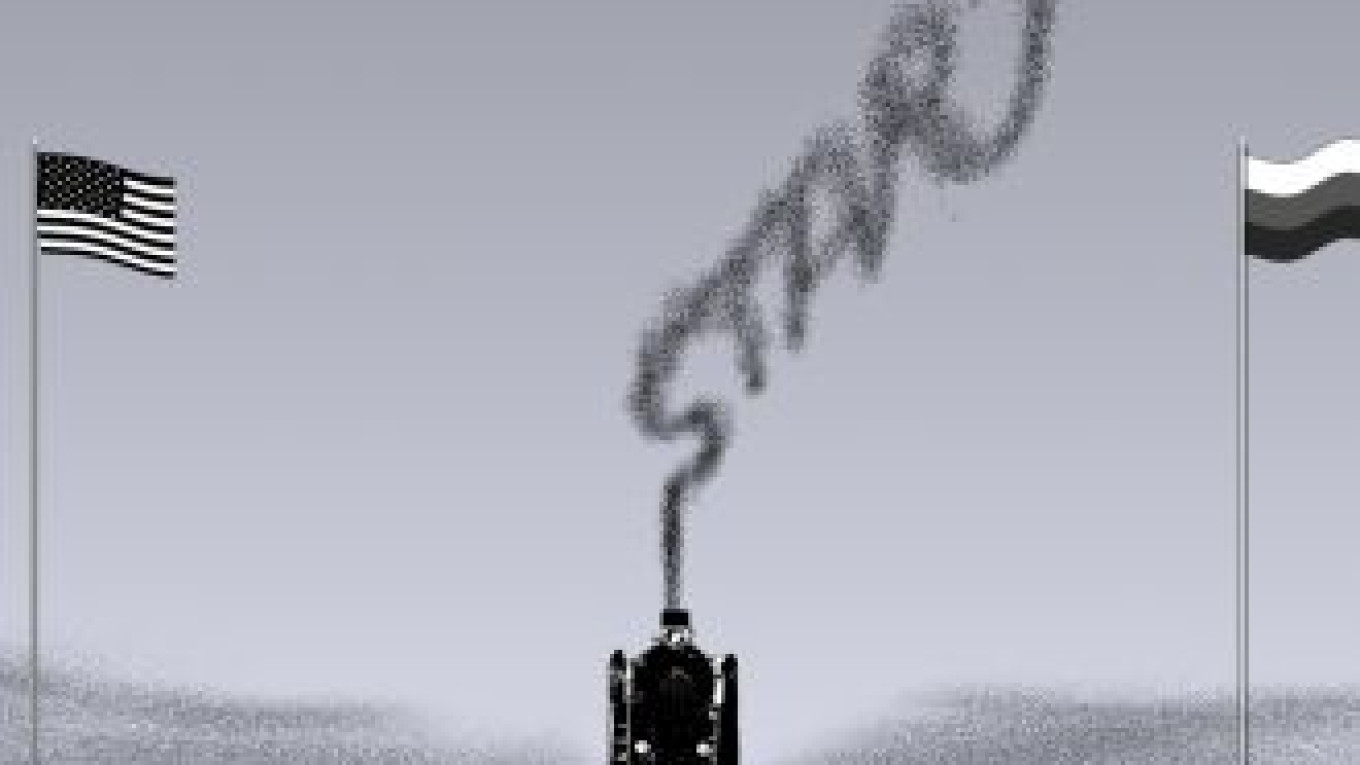Following President Dmitry Medvedev’s cue after he signed the New START arms reduction treaty in April, the State Duma agreed to ratify the treaty “synchronically” with the U.S. Senate. But after Republican senators in late December attached a last-minute resolution that, among other things, committed the United States to modernize its nuclear force and to develop missile defense as U.S. national security concerns dictate, the Duma believes that it must answer in the same fashion.
In contrast to U.S. politicians, Duma deputies hardly debated the treaty in 2010, limiting their discussion to a series of superficial, pro forma hearings. But after the Senate resolution was attached to the treaty in late December, Duma International Affairs Committee chairman Konstantin Kosachyov has been working on a Russian resolution of its own, and it is expected to counter the U.S. resolution on every point.
The Senate resolution commits President Barack Obama to modify the U.S. nuclear arsenal and start negotiations with Russia on tactical nuclear weapons. But the three U.S. interpretations of the treaty’s provisions are most objectionable to Duma deputies. One interpretation is absurd. It states that the tally of Russia’s strategic forces should include its mobile, rail-based missile systems. But they don’t exist; Russia abolished them in 2005.
The two other interpretations are more significant. One states that the treaty in no way restricts the development of the U.S. missile defense system. The other says that the treaty does not affect U.S. plans to create a global strike capability using strategic delivery vehicles equipped with non-nuclear warheads.
But at the end of the day, all of this grandstanding and political maneuvering is meaningless for two reasons: First, Russia is not able to maintain nuclear parity with the United States, and, second, there is no compelling security reason to be concerned about this fact. While the United States will be truly disarming its number of delivery vehicles in accordance with the New START limits — from 1,188 to 700 — Russia, which has only about 600 delivery vehicles today, falls below the lower treaty ceiling from the very beginning. What’s worse, by 2017, the year that New START mandates that all nuclear arms cuts must be completed, Russia’s number of strategic delivery vehicles will decrease even further to roughly 390. This is because many of Russia’s 600 strategic delivery vehicles were produced in the 1970s and 1980s and will expire in the next seven years. Even as the country will be forced to retire roughly 40 obsolete missiles a year, it will be able to produce only 10 new ones. Thus, as Washington will disarm to 700 strategic vehicles, Moscow will disarm from 600 to below 400.
Despite the hyped-up rhetoric from Russian hawks, this 300-missile gap has no bearing whatsoever on the U.S.-Russian security balance. Under New START, Russia will retain more than 1,000 deployed nuclear warheads, which by itself is more than enough to guarantee deterrence since the country’s delivery vehicles can be fitted with multiple warheads. In addition, no U.S. president will ever attempt to verify whether the U.S. nuclear arsenal is capable of destroying most of Russia’s missiles before Moscow can launch a counterattack. Considering Russia’s mobile nuclear forces — above all, its nuclear submarines — a substantial counterattack is guaranteed even in the theoretical event of a successful massive initial attack by the United States, while no U.S. missile defense system would be capable of intercepting retaliatory Russian missiles carrying multiple warheads. Even if only one or two nuclear warheads evaded U.S. missile defense, it would inflict unacceptable damage to the United States.
But the United States is also guilty of clinging to old Cold War approaches to nuclear disarmament. If Obama’s prime motivation was nuclear disarmament, as he claims, he — like former President George W. Bush — could have disarmed unilaterally without the hype of a Cold War-era treaty with Cold War-era provisions, including a preamble linking offensive and defensive weapons and outdated verification measures. But Obama clearly needed a way to boost his reset agenda with Russia, even if it meant pulling a Cold War-era skeleton out of the closet.
Alexander Golts is deputy editor of the online newspaper Yezhednevny Zhurnal.
A Message from The Moscow Times:
Dear readers,
We are facing unprecedented challenges. Russia's Prosecutor General's Office has designated The Moscow Times as an "undesirable" organization, criminalizing our work and putting our staff at risk of prosecution. This follows our earlier unjust labeling as a "foreign agent."
These actions are direct attempts to silence independent journalism in Russia. The authorities claim our work "discredits the decisions of the Russian leadership." We see things differently: we strive to provide accurate, unbiased reporting on Russia.
We, the journalists of The Moscow Times, refuse to be silenced. But to continue our work, we need your help.
Your support, no matter how small, makes a world of difference. If you can, please support us monthly starting from just $2. It's quick to set up, and every contribution makes a significant impact.
By supporting The Moscow Times, you're defending open, independent journalism in the face of repression. Thank you for standing with us.
Remind me later.


